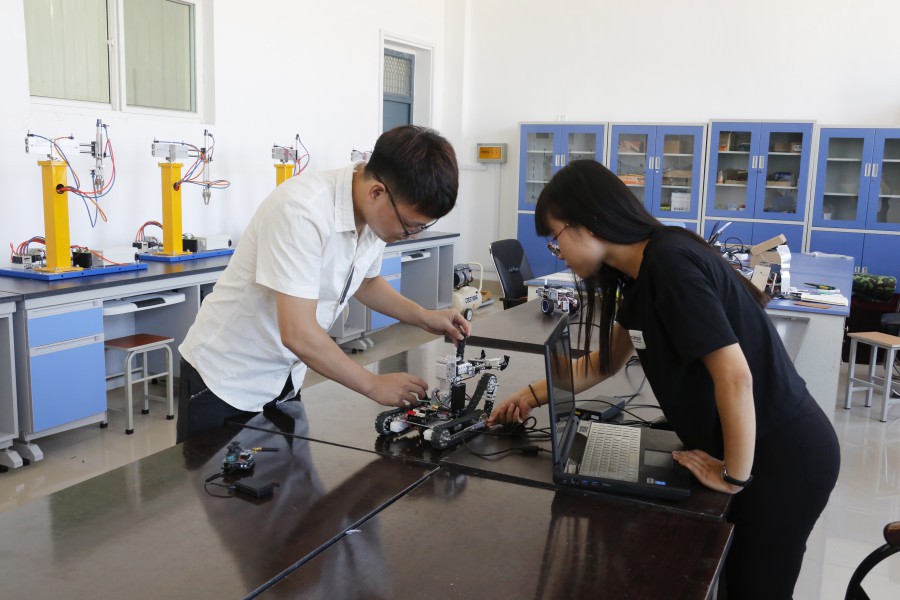Service Hotline
Methods for Controlling Hole Position Accuracy and Common Problems in Drilling Technology for Precision Instrument Manufacturing
In precision instrument manufacturing, the control of hole position accuracy is a key factor determining product performance and service life. As an important means of manufacturing precision holes, the control of hole position accuracy in drilling technology directly affects product quality. This article will start from the basic principles of drilling technology to discuss the methods of controlling hole position accuracy, and at the same time analyze common problems and solutions in drilling technology.
methods of controlling hole position accuracy, and at the same time analyze common problems and solutions in drilling technology.
I. Basic Principles of Drilling Technology
Drilling technology is a machining method that cuts the workpiece material by rotating the drill bit and applying pressure, thereby forming holes. In precision instrument manufacturing, drilling technology is widely used, especially suitable for processing deep holes, complex-shaped holes, and small diameter workpieces. In the drilling process, the rotational motion of the drill bit and the axial feed motion work together to cut the material, thus forming holes. The control of hole position accuracy is mainly achieved by adjusting the drilling process parameters, including the selection of the drill bit, cutting speed, feed rate, etc., to meet the requirements of hole position accuracy.
II. Methods for controlling hole position accuracy
Select the appropriate drill bit
In the drilling process, the selection of the drill bit is an important factor affecting hole positioning accuracy. The geometric shape, material, and size of the drill bit will all affect the hole positioning accuracy. Generally, the use of hard alloy drill bits for drilling can improve drilling efficiency and hole positioning accuracy. At the same time, the geometric shape of the drill bit also needs to be selected according to the requirements of hole positioning accuracy, such as using cylindrical drill bits for drilling to ensure high hole positioning accuracy.
Control the cutting speed
Cutting speed refers to the rotational speed of the drill bit during the drilling process, usually measured in revolutions per minute (rpm). The control of cutting speed has a significant impact on hole positioning accuracy, with too fast or too slow cutting speed leading to a decrease in hole positioning accuracy. Generally speaking, the cutting speed should be within an appropriate range to ensure hole positioning accuracy.
Control the feed rate
Feed rate refers to the pressure applied by the drill bit to the workpiece during the drilling process, usually measured in millimeters per minute (mm/min). The control of feed rate has a significant impact on hole positioning accuracy, with too small or too large feed rate leading to a decrease in hole positioning accuracy. Generally speaking, the feed rate should be within an appropriate range to ensure hole positioning accuracy.
Using precise measuring equipment
In the drilling process, real-time monitoring of hole positioning accuracy can be carried out using precise measuring equipment, which can promptly detect and correct hole positioning deviation and improve hole positioning accuracy. Precise measuring equipment includes laser measuring instruments, coordinate measuring machines, and other equipment that can provide high-precision measurement data to help operators timely adjust drilling process parameters and improve hole positioning accuracy.
3. Common problems and solutions in drilling process
Hole diameter is too large
Hole diameter is too large is a common problem in the drilling process, mainly caused by drill bit wear or improper selection. To solve this problem, it is necessary to regularly replace worn drill bits and select appropriate drill bits for drilling. At the same time, the method of multiple drilling can be adopted to gradually reduce the hole diameter through multiple drilling to meet the expected hole diameter requirements.
The roughness of the hole wall
The roughness of the hole wall is a common problem in the drilling process, mainly caused by excessive cutting force or excessive cutting speed during the drilling process. To solve this problem, it is necessary to appropriately reduce the cutting speed and feed rate to reduce the cutting force and improve the smoothness of the hole wall. At the same time, the method of multiple drilling can be adopted to gradually reduce the roughness of the hole wall through multiple drilling to meet the expected smoothness requirements.
Hole offset
Hole offset is a common problem in the drilling process, mainly caused by the offset of the drill bit or the movement of the workpiece during the drilling process. To solve this problem, it is necessary to strictly control the position of the drill bit and workpiece during the drilling process to avoid the offset of the drill bit or the movement of the workpiece. At the same time, the method of multiple drilling can be adopted to gradually adjust the hole position through multiple drilling to meet the expected hole position requirements.
In summary, the control of hole positioning accuracy is an important link in the drilling process of precision instrument manufacturing. By selecting appropriate drill bits, controlling cutting speed and feed rate, and using precise measuring equipment, the hole positioning accuracy can be effectively improved. At the same time, corresponding measures should be taken to address common problems in the drilling process to ensure the stability and reliability of hole positioning accuracy.
controlling cutting speed and feed rate, and using precise measuring equipment, the hole positioning accuracy can be effectively improved. At the same time, corresponding measures should be taken to address common problems in the drilling process to ensure the stability and reliability of hole positioning accuracy.
Copyright © 2019-2025 Instrumentation Manufacturer
Addresses: Phone number: E-Mail:

Our Businesses
